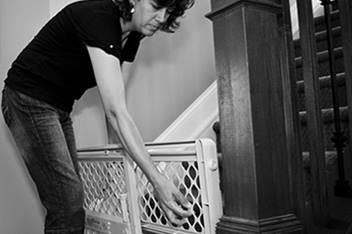Toy Safety
Playing is a child’s job, and toys are the tools a child uses to get that job done. Toys help children learn, develop, and explore their surroundings. While most toys are safe, some toys can lead to injuries. These injuries can be the result of a flaw in the product design but can also happen when the toy is used in a way that does not follow the manufacturers’ instructions.
These types of injuries happen more often than you might think. A child or teen younger than 18 years of age is treated in an emergency department in the United States every 3 minutes for a toy-related injury. The biggest risk for young children is choking on small toys or small parts of larger toys. As children get older, injuries are more likely to come from riding toys like foot-powered scooters, tricycles and wagons.Toy Safety Tips
- Read and follow the manufacturer’s instructions for assembly and use.
- Check the age recommendations. Labels on a toy’s packaging can tell you if a toy is appropriate for your child’s age.
- With young children, avoid small toys and toys with small parts.
- Use a small parts test device. If a toy fits inside the tube, it is too small and can be a choking hazard for a young child. These test devices can be found at many toy stores and baby specialty stores.
- Check the diameter. Only children 6 years of age and older should play with small balls, marbles, and games with small balls or ball-shaped pieces. Any ball smaller than 1.75 inches in diameter can be a choking hazard.
- Avoid magnets. Magnetic building sets, magnetic jewelry, and other magnetic toys can be swallowed easily and may cause serious internal injuries. Learn more about magnet-related injuries here.
- Think about the batteries. Choose electronic toys that have battery compartments that need a screwdriver to open or that have a child-resistant locking system. Batteries can be toxic if swallowed.
- Separate toys. If there are children of different ages in the home, keep toys for older children separate from toys for younger ones.
- Use extra caution with riding toys.
- Make wearing a helmet a rule. Tell your children that they must wear helmets on scooters, skateboards and other riding toys that require balance. Elbow pads and knee pads are also recommended.
- Avoid riding near a street. Only let children ride in open, flat areas away from traffic.
- Supervise. Closely supervise any child younger than 8 years of age on a riding toy.
- Check for recalls. Visit Recalls.gov to see if any toys you already own have been recalled.
Toy Injury Facts
- More than half of toy-related injuries happen to children younger than 5 years of age
- Nearly 14 young children per day are treated in emergency departments after swallowing or inhaling toys or parts from toys.
- Riding toys account for more than 40% of toy injuries to children 5 through 17 years of age.
In The News
- CBS News: The Most Dangerous Types of Toys for Kids
- Today Show: The Kids Want Scooters this Year? Buy Them Helmets too, Docs Suggest
- USA Today: Study Says Scooters Lead the Toy-Injury Pack
Additional Toy Safety Resources
- Toy-related injuries among children treated in US Emergency Departments, 1990-2011
- PubMed Abstract - November 2014
- Press Release - December 2014
- Blog Post - December 2014
- Rare-earth magnet ingestion-related injuries among children, 2000-2012
- PubMed Abstract - November 2013
- Blog Post - November 2013
- Pediatric battery-related emergency department visits in the United States, 1990-2009
- PubMed Abstract - May 2012
- Press Release - May 2012



